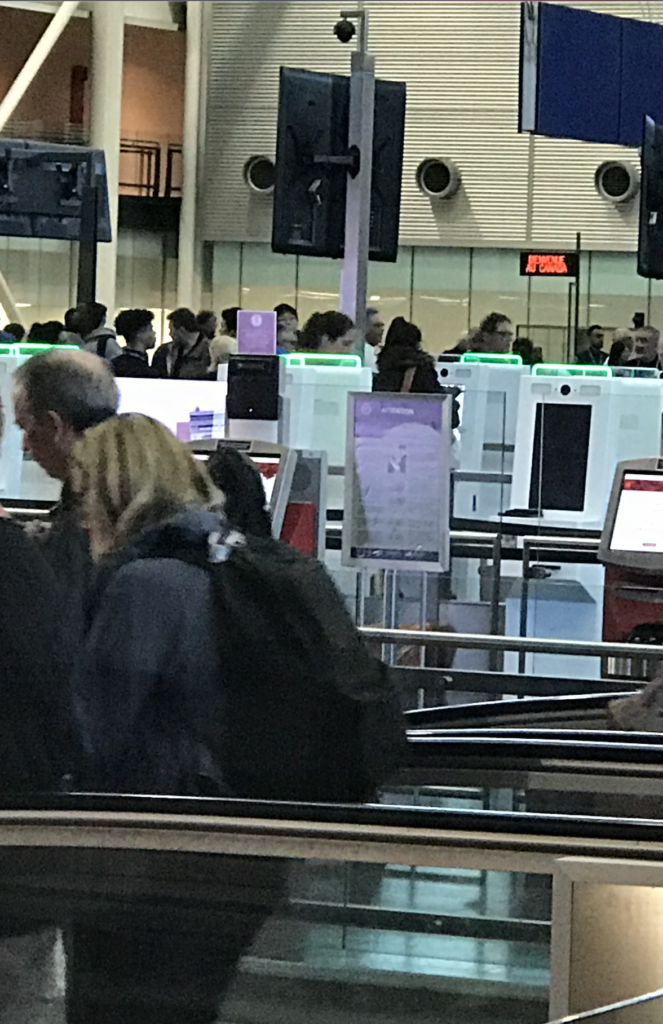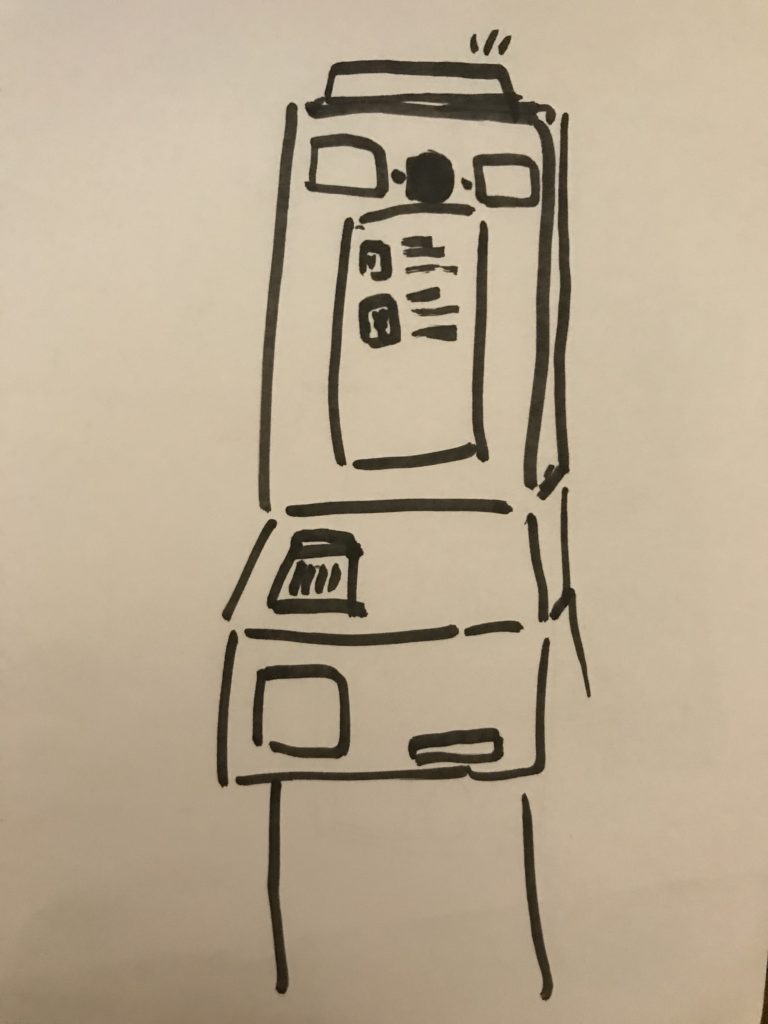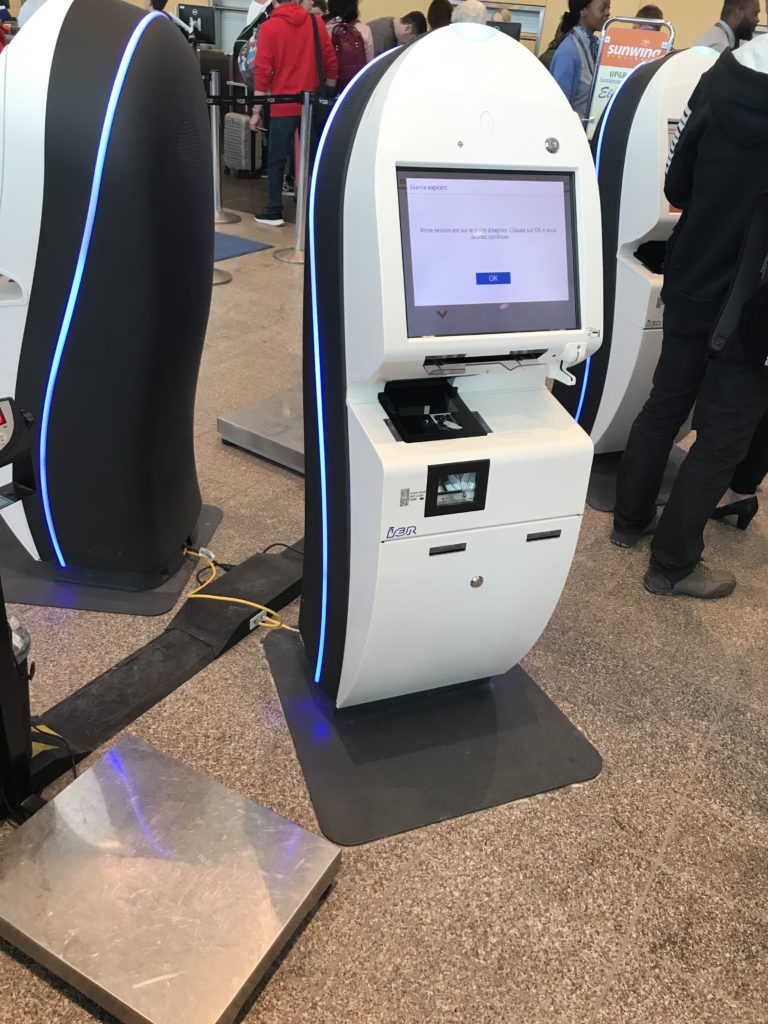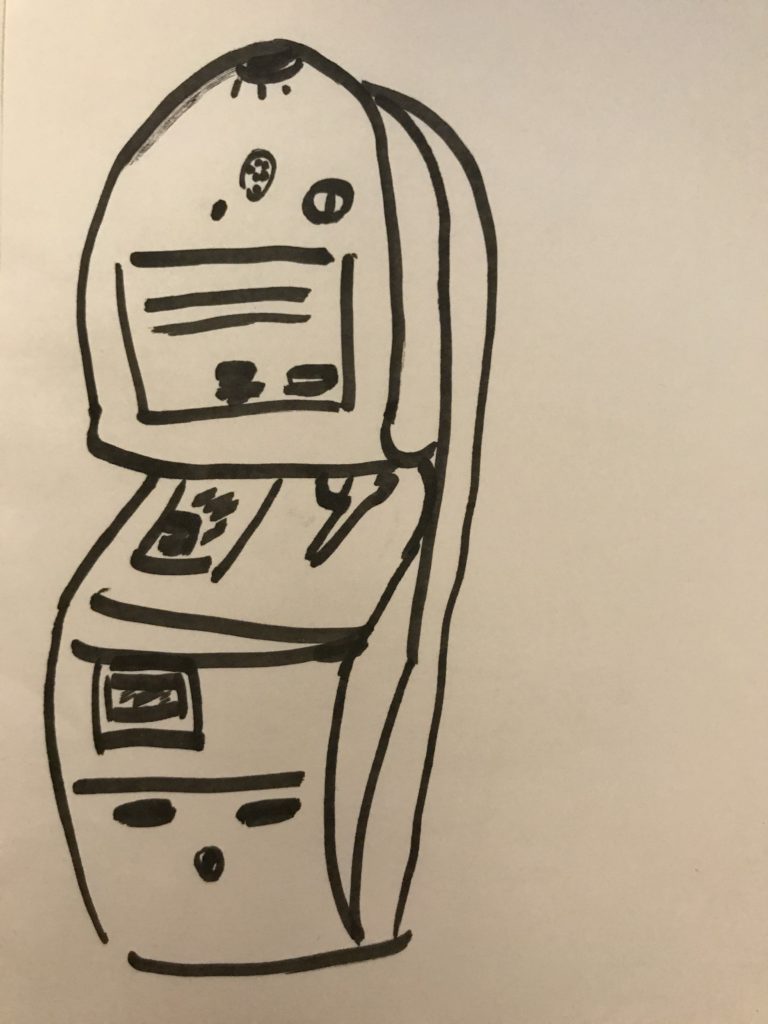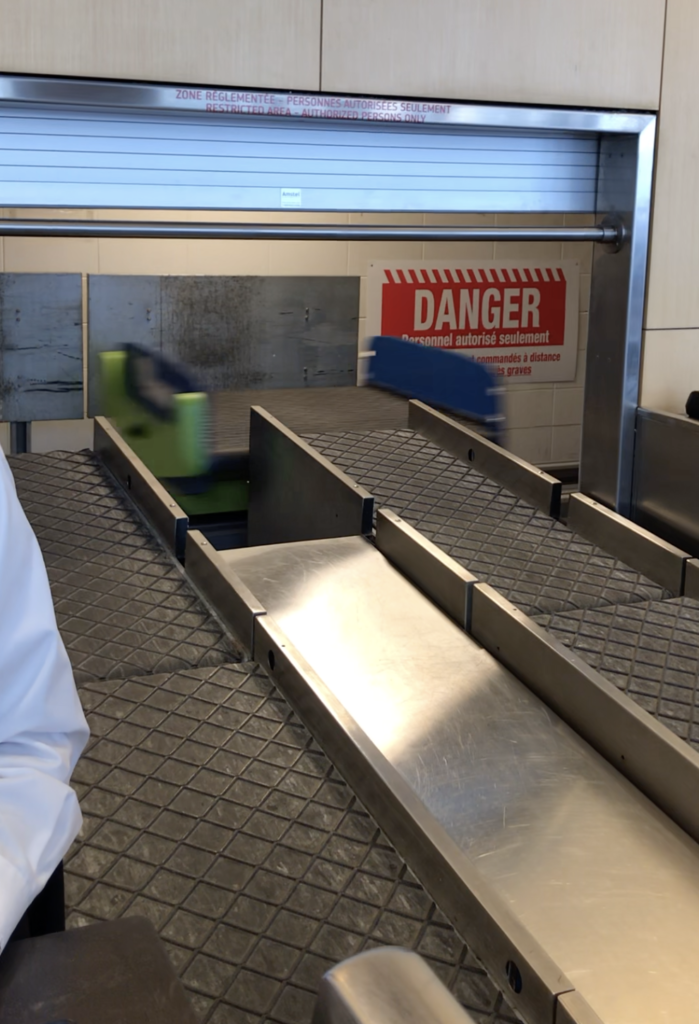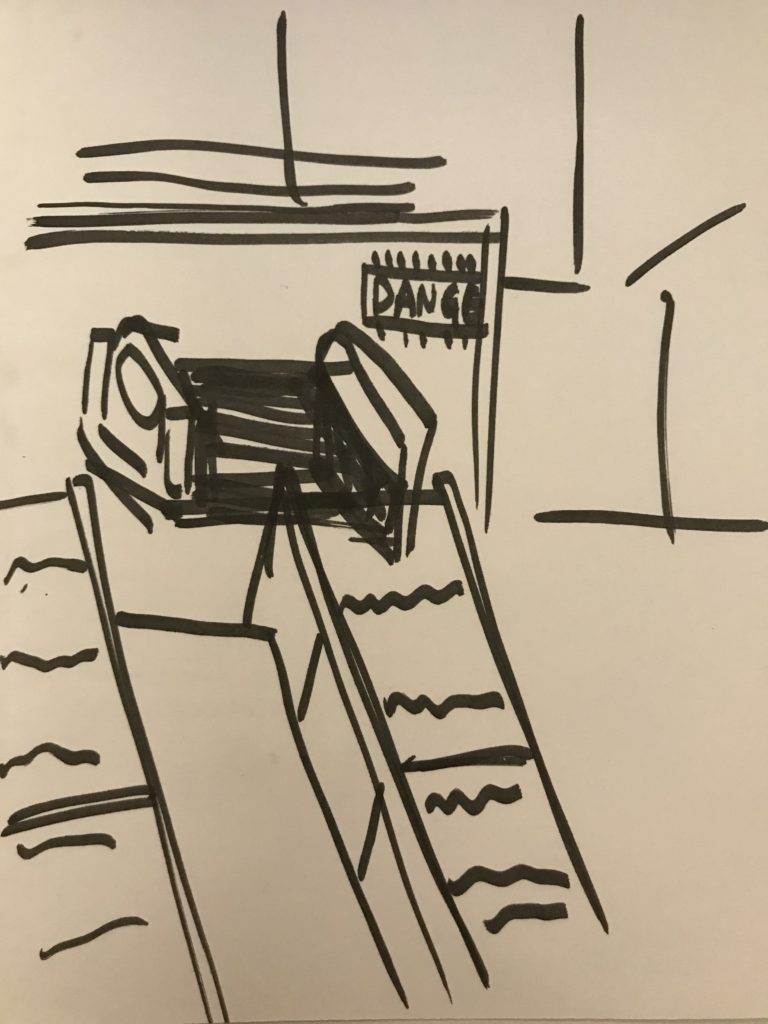The first network infrastructure I drew is called primary inspection kiosk. I first saw this at Montréal-Pierre Elliott Trudeau International Airport, and I thought this could only be used by returning residents, Canadian. Surprisingly, all travelers, including foreigners, are required to verify their identity and make an on-screen declaration through this machine. During the self-inspection process, I found it easier and faster then I thought. People will need to scan their passport first, take a photo, and answer some questions. After using it, I personally hope that every international airport, especially JFK, could installed a bunch of this kiosk, so people do not have to stand in line for more than two hours waiting for the inspection.
The second one is some cars for transporting check-in luggage. I saw them at Québec City Jean Lesage International Airport when I was checking in for my flight from Quebec to New York. Although I didn’t have any luggage to check in, I keep looking at this system. Passengers will put their luggage on the conveyor belt first, and when the luggage is sent to the end of the belt, the car will come and take the luggage away. In this way, there is no need for a person to stand there and move every passengers’ luggage by hand.
The last one is the self-service check-in machine. People have to select their airline first, and then either enter the booking reference manually or scan the QR code. After confirming your information and selected seat correctly, you will get your boarding pass and finish the check-in process. Although it seems simple, I and my friend didn’t successfully check-in by using this machine. The selected seat of one of us is Gate, which means you are possible to get on this airplane but not guarantee to have a seat, so we have to go to the ground crew for help.

